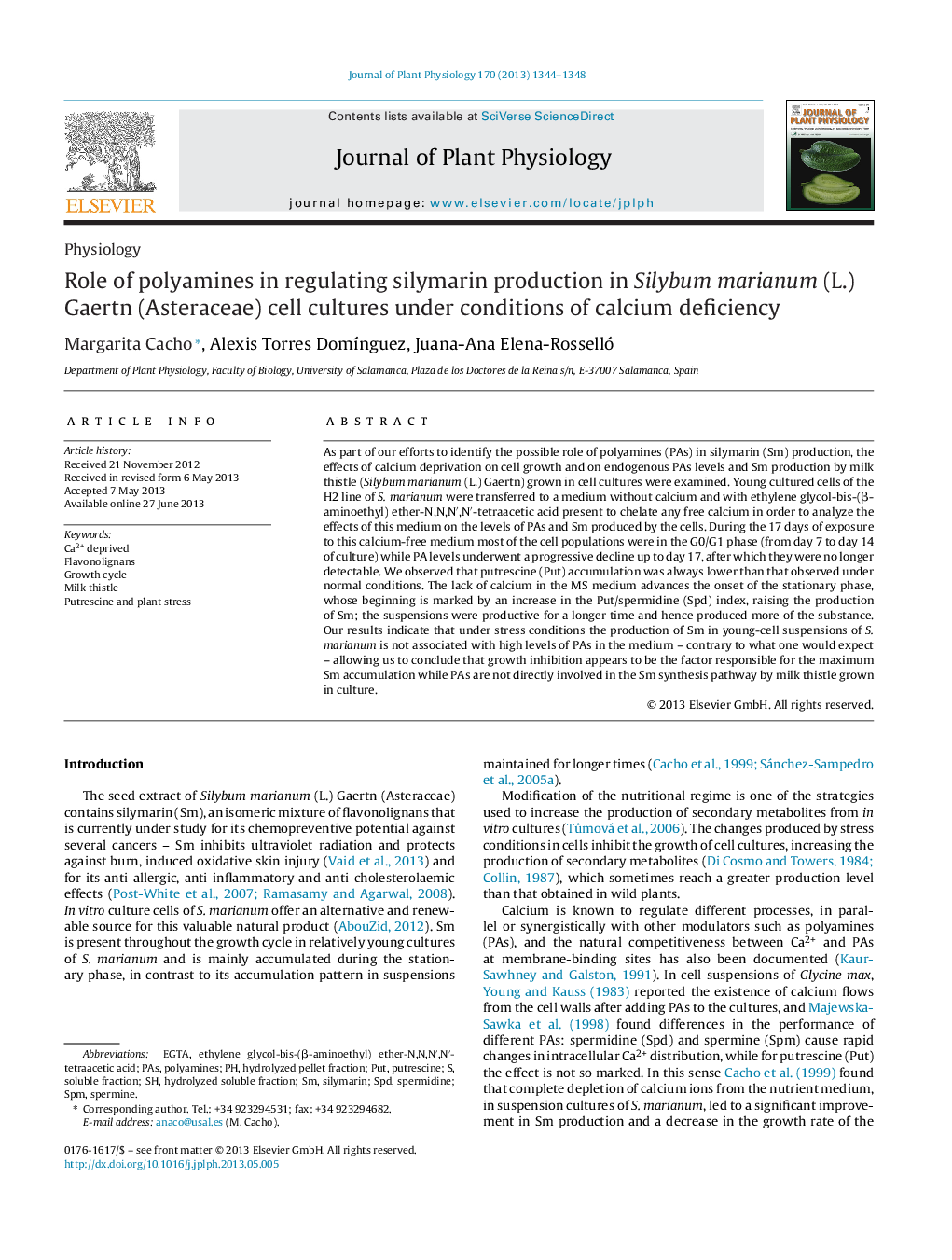| Article ID | Journal | Published Year | Pages | File Type |
|---|---|---|---|---|
| 2056002 | Journal of Plant Physiology | 2013 | 5 Pages |
As part of our efforts to identify the possible role of polyamines (PAs) in silymarin (Sm) production, the effects of calcium deprivation on cell growth and on endogenous PAs levels and Sm production by milk thistle (Silybum marianum (L.) Gaertn) grown in cell cultures were examined. Young cultured cells of the H2 line of S. marianum were transferred to a medium without calcium and with ethylene glycol-bis-(β-aminoethyl) ether-N,N,N′,N′-tetraacetic acid present to chelate any free calcium in order to analyze the effects of this medium on the levels of PAs and Sm produced by the cells. During the 17 days of exposure to this calcium-free medium most of the cell populations were in the G0/G1 phase (from day 7 to day 14 of culture) while PA levels underwent a progressive decline up to day 17, after which they were no longer detectable. We observed that putrescine (Put) accumulation was always lower than that observed under normal conditions. The lack of calcium in the MS medium advances the onset of the stationary phase, whose beginning is marked by an increase in the Put/spermidine (Spd) index, raising the production of Sm; the suspensions were productive for a longer time and hence produced more of the substance. Our results indicate that under stress conditions the production of Sm in young-cell suspensions of S. marianum is not associated with high levels of PAs in the medium – contrary to what one would expect – allowing us to conclude that growth inhibition appears to be the factor responsible for the maximum Sm accumulation while PAs are not directly involved in the Sm synthesis pathway by milk thistle grown in culture.
